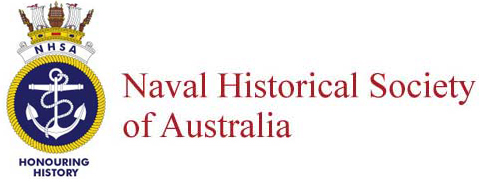- Author
- Law, George B.
- Subjects
- Naval technology, History - WW2
- Tags
-
- RAN Ships
- HMAS Nepal
- Publication
- April 1993 edition of the Naval Historical Review (all rights reserved)
Having completed this further training it was time to leave Scarborough back to Pompey for drafting and shortly afterwards Johnny Fisher and I were on a train bound for Greenock to join the NEPAL. We were very green rookies joining a ship’s company made up largely of well-seasoned matelots – how I remember those early days! Of course we didn’t know at the time that being called a “kipper unmentionable” wasn’t really questioning our paternity – but more an expression of endearment . . .
Shortly after leaving Greenock to join the Malta-bound (so we thought) convoy, Johnny and I set up watch in our HFDF office down aft. We tuned in to the known radio frequency of transmissions from Lorient, following the familiar German coded messages. A few distant U-boat signals were identified during those early days but I recall that the trip to the Azores and Freetown (we were not bound for Malta after all) was, on the whole, uneventful. Not so from thereon to Capetown, however, as we reported a fair amount of U-boat radio transmissions including the familiar “shadowing” and “attacking” signals. In fact the very clear signals and the very fine zero readings on the goniometer provided a pretty accurate direction to follow to become within the range of the asdics. Lennie Cox gave a vivid account of “A South Atlantic Incident” in the pre-Christmas Newsletter (December, 1990) and I am sure he will allow me to add a rider to his excellent narrative, just to add that HFDF made a contribution in locating the Uboat on that occasion.
On arrival at Kilindini to join the Eastern Fleet, Johnny and I discovered that our training was not completed: both German and Japanese submarines and surface craft operated in the Indian Ocean so we attended a training course in Mombasa to learn about Japanese telegraphy procedures (over eighty letters in their alphabet!) and how to identify the different signals. From thereon we operated two receivers following dual transmissions using a pair of split headphones, Hamburg rattling away to the German submarines etc. in one ear and Singapore doing likewise to the Japs in the other! It was all a most interesting experience during a very happy two years on loan to the RAN and I am ever grateful that at least one of the “N” Class Destroyers had a bird-cage above the four inch gun.
